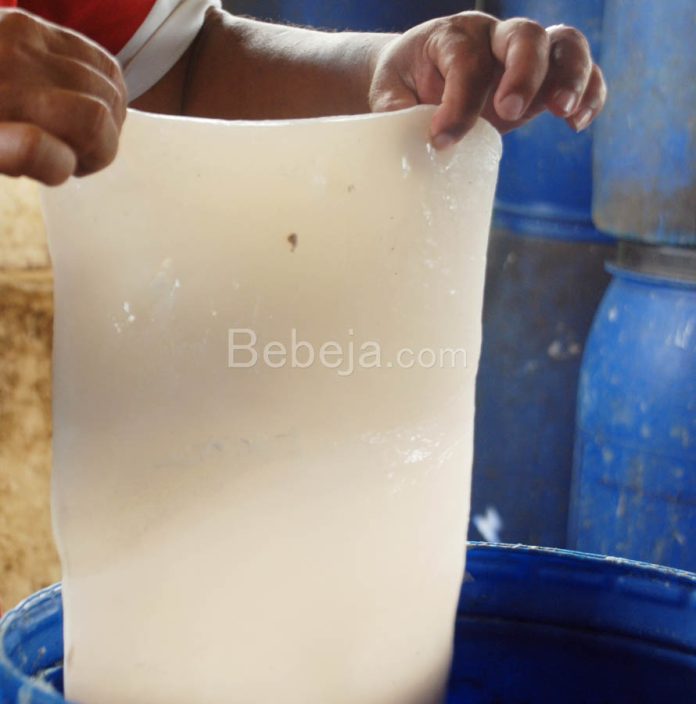Nata, a product made from tapioca waste, is created through a process similar to that of making nata de coco from coconut water. The residual sugar concentration of 5-6% in tapioca allows for the conversion of any substance containing sugar into nata.
Nata de cassava specifically refers to the brand name of nata produced from tapioca waste. To transform tapioca waste into nata, the waste is boiled for 1.5-2 hours to remove cyanide acid. After boiling, tapioca waste is cooled and filtered to separate the pulp.
The resulting wastewater is then combined with 2.5 grams/liter of ZA fertilizer and thoroughly stirred until homogeneous. The water mixture is subsequently boiled, cooled, and placed in a container covered with newspaper.
Acetobacter xylinum, a type of fermenter bacterium, is added to each container. A 30 cm by 60 cm container requires 100 ml of liquid from the bacterial fermenter. Tapioca typically possesses an acidic pH, which is ideal for the fermentation bacteria.
To complete the fermentation process, the containers are placed on a shelf in a room with a temperature of 25 to 26 degrees Celsius for 8 to 10 days. The resulting nata de cassava can be sold in the form of sheets.
